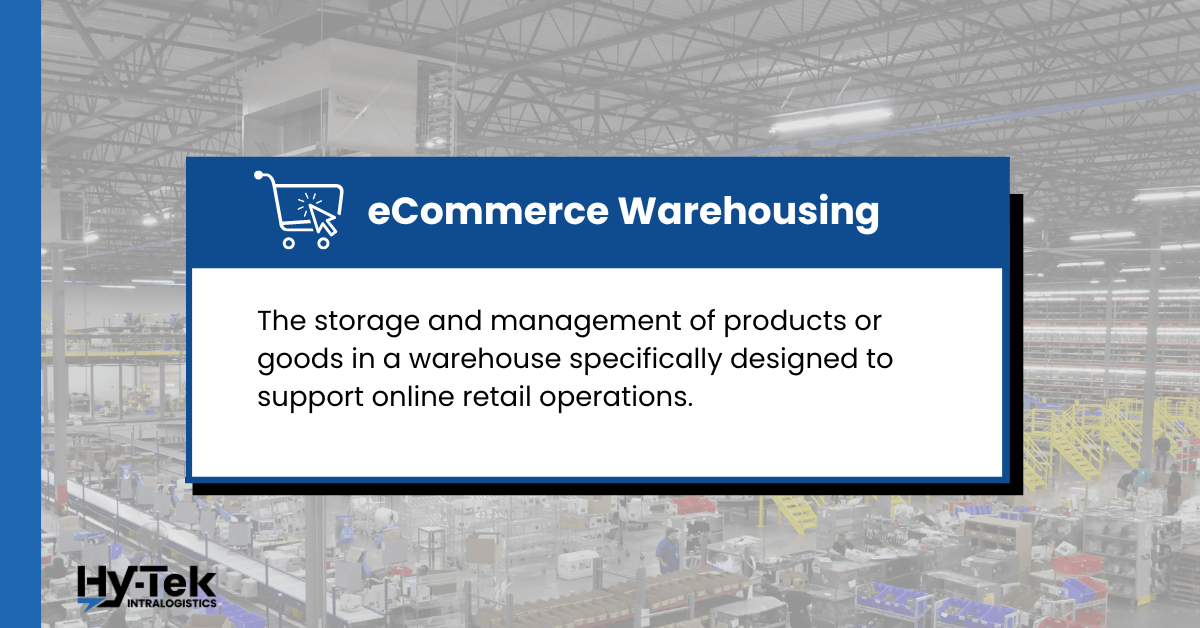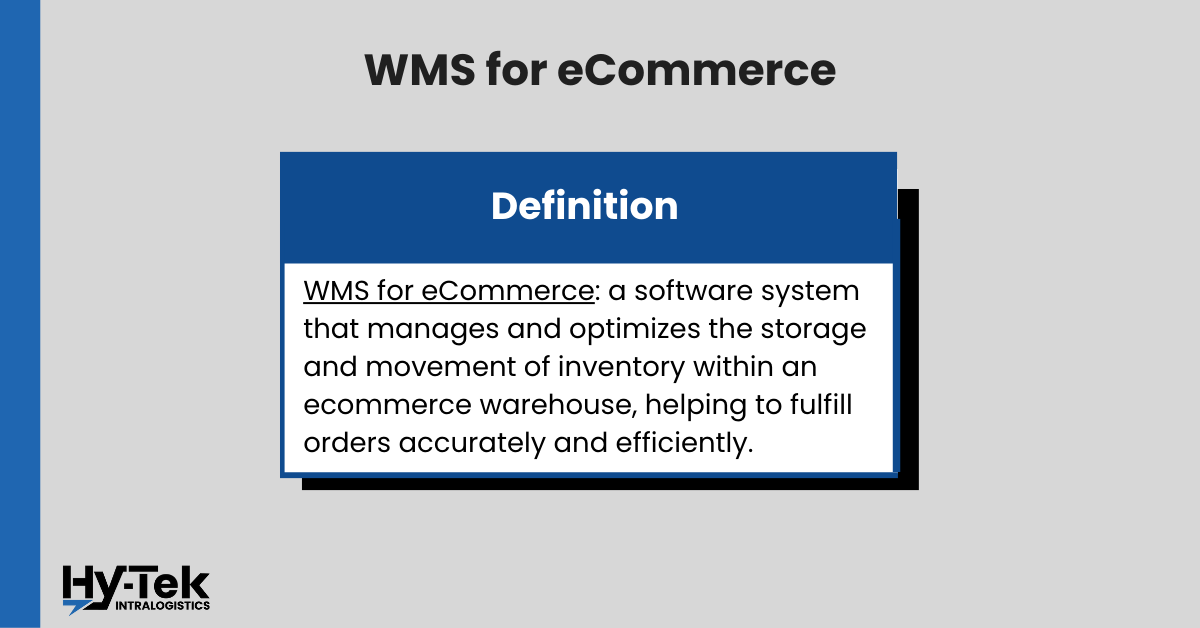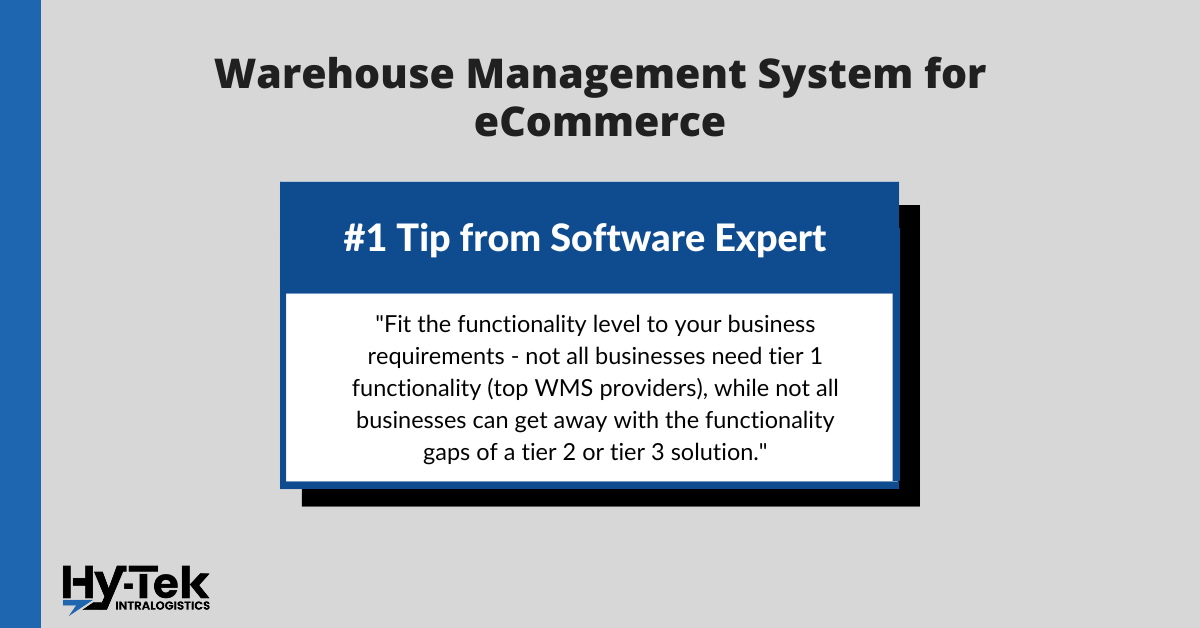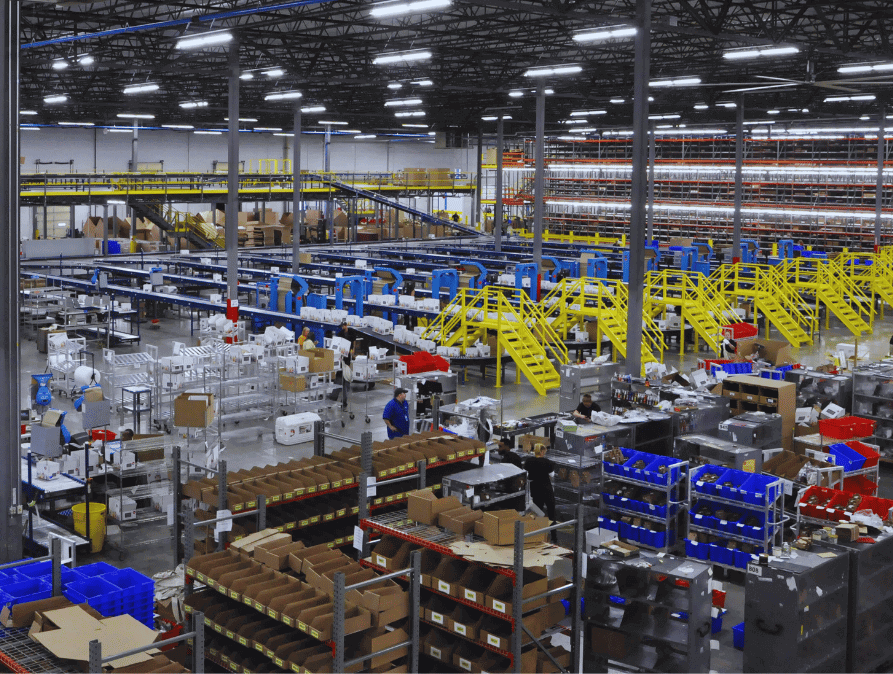The rise of eCommerce has transformed the retail industry, with online shopping becoming an increasingly popular way for consumers to purchase products. According to a report by Forbes Advisor, by 2026, 24% of retail purchases are expected to take place online. This trend has highlighted the need for appropriate tools to manage online orders.
To do this, eCommerce businesses require robust systems and processes that can handle the entire order process, from receiving orders to shipping products.
A warehouse management system (WMS) plays a large role in being able to efficiently and effectively manage inventory and release orders for eCommerce businesses.
But choosing a WMS can be an overwhelming task, especially when there’s so much at stake.
In this article, we’ll uncover the top 5 features that a WMS for eCommerce should have. This will help you narrow down your WMS software options.
What Is eCommerce Warehousing?
eCommerce warehousing refers to the storage and management of products or goods in a warehouse specifically designed to support online retail operations. It involves the handling of inventory, picking, packing, and shipping of products ordered through online channels.

eCommerce warehousing is crucial for the smooth functioning of online businesses as it ensures timely and accurate delivery of products to customers. It may also involve the integration of technology such as warehouse management systems, automated material handling equipment, and order fulfillment software to streamline operations and optimize efficiency.
An eCommerce company’s warehousing operations differ significantly from a standard warehouse operation due to the unique demands of online retail.
eCommerce companies must manage a vast array of products, often with high turnover rates, and must have the ability to quickly and accurately fulfill orders from multiple sales channels. This requires a higher degree of inventory accuracy, with precise tracking of items and storage locations to avoid stockouts and overstocking.
eCommerce companies typically have a larger volume of smaller orders with more frequent order cycles, requiring the ability to pick and pack items quickly and efficiently.
Furthermore, eCommerce warehousing operations may involve managing inventory across multiple warehouses or fulfillment centers, often in different locations, which adds a layer of complexity.
To meet these demands, eCommerce companies often use specialized warehouse management software tailored to their unique needs.
What is a Warehouse Management System for eCommerce?
A WMS for eCommerce manages the movement of inventory within a distribution center. It tracks the location and status of inventory, manages order picking and packing, and coordinates shipping.

In an eCommerce distribution warehouse, a Warehouse Management System (WMS) plays a critical role in managing inventory, order fulfillment, and shipping processes. One of the primary functions of a WMS in an e-commerce warehouse is inventory management, which involves tracking inventory levels, locations, and movements in real time. By doing so, the system ensures accurate inventory counts, eliminates stockouts, and optimizes warehouse space utilization.
Another key function of a WMS in an eCommerce warehouse is order fulfillment management. This involves managing the picking, packing, and shipping of customer orders. A WMS uses advanced algorithms to optimize picking routes, batch picking, and advanced cartonization to reduce the time and labor required to fulfill orders accurately and efficiently.
A WMS also provides shipping management capabilities, which involve generating shipping labels and interfacing with carrier systems. By integrating with carrier systems, the WMS can determine the best carrier and shipping method for each order based on factors such as weight, size, and destination. This ensures timely delivery and reduces shipping costs.
Lastly, a WMS provides real-time visibility and reporting on warehouse operations, enabling managers to monitor productivity, track KPIs, and identify areas for improvement. Overall, a WMS is an essential tool for managing eCommerce warehouse operations efficiently and effectively.
How eCommerce WMS Software Integrates with Other eCommerce Software
It’s important to understand the distinction between eCommerce WMS software and the other types of software that eCommerce businesses utilize.

When people are shopping online, they are probably shopping on either a Marketplace or an eCommerce Platform.
So, what’s the difference between a marketplace and a platform?
A marketplace is a website or app where multiple suppliers can list and manage their products and/or services. We all know the marketplace giants like Amazon, Etsy, and eBay, where anybody can list and manage their products.
An eCommerce platform is a website or app where a single entity lists and manages its own products and/or services. Common eCommerce platforms are WooCommerce, Magento, BigCommerce, etc.
Large retailers can list their products on both marketplaces and their own eCommerce platforms.
Marketplaces and eCommerce platforms must be connected to an order management system (OMS). An OMS is software that supports available listings on the front-facing marketplaces and platforms by integrating with a WMS that tracks inventory levels in the warehouse. An OMS tracks orders from when the customer places items in the car to when the order has been fulfilled and shipped. There are many OMS providers, but one of the most well-known providers is Shopify.
An eCommerce warehouse management system receives order information from the OMS, tracks inventory status, and manages the order picking, packing, and shipping processes. A common, full-stack software option for managing eCommerce inventory in the warehouse is Hy-Tek’s IntraOne Software.
All of these systems work together in conjunction with enterprise resource planning (ERP) tools to deliver the order to the customer, however, they have distinct functions. It’s important to choose a WMS that integrates with the eCommerce software and order management system that you have in place.
Benefits Of Warehouse Management System for eCommerce Fulfillment
A warehouse management system (WMS) offers many benefits to an eCommerce company, especially as the business scales up and its inventory grows.
A WMS can streamline warehouse operations by automating manual processes, managing inventory levels, and tracking inventory accuracy in real time. This not only saves time and minimizes errors, but also improves order fulfillment and increases customer satisfaction.
A WMS also provides centralized control and visibility over multiple warehouses, making it easier for warehouse managers to optimize their resources and make data-driven decisions. With predictive analytics, a WMS can even help eCommerce companies anticipate demand and plan their inventory accordingly.
Overall, a WMS can enhance productivity, reduce costs, and improve the overall performance of an eCommerce business.

With a warehouse management system, businesses can expect improved accuracy in recordkeeping and supply chain operations while also reducing labor costs associated with manual tasks. Plus, warehouses will be able to offer better customer service since processes are automated – leading to fewer mistakes and delays. So don’t delay – invest in a reliable WMS today and experience the benefits firsthand!
WMS for eCommerce vs Retail – How the functionality differs
There are a few key differences in the way a WMS will operate and be configured for an eCommerce company versus a traditional store retailer, manufacturer, or wholesaler.
First, the units of measure (UOM) are typically drastically different. Units per eaches (such as one shirt) are usually the primary metric in an eCommerce WMS, whereas, for conventional retailers and manufacturers, cases per pallet (such as a pallet of shirts) are the units of measure.
Secondly, order waving is a critical function for any eCommerce WMS. “Waving” is the process in warehouse management where orders are grouped into a “wave” and then batch-picked together, rather than individually. A WMS will group orders based on a set of predetermined criteria, such as product location, order priority, or delivery deadlines. This also relates to managing order priority levels that can vary and become critical to servicing the customer in an eCommerce operation.
Lastly, order flow for an eCommerce WMS configuration is much more critical than it is for a traditional store retailer or manufacturer.
Why? Order flow means how orders are given to the warehouse and how those orders move throughout the process. Typically, you have less visibility to the upcoming demand, since orders are being driven by the customer and can be placed whenever. Typical retail has a more structured cadence to orders. For example, stores may only ship on designated days, so you have the full week to pick and stage the orders.
Picking a WMS for Your eCommerce Business – Top 5 Most Important Qualities
Choosing the right warehouse management system (WMS) for your eCommerce business can be a daunting task, especially when it needs to integrate with your facility’s existing software.

It’s essential to select the WMS software that will meet all of your needs while providing you with accurate inventory control and enterprise resource planning capabilities. To help you narrow down the options, here a the top 5 qualities any WMS for eCommerce must have:
- Ease of integration. An eCommerce WMS will typically need to interface with systems such as an ERP, Order Management System, Rate Shopping Software, etc., so ensuring that it is easy to integrate is key.
- Mature Inventory Management. Being able to maintain customer service level agreements (SLA), such as two-day delivery, is contingent upon accurate inventory levels to properly allocate inventory to orders. Because demand is more volatile in eCommerce and orders can be placed at any time of day, real-time inventory tracking and visibility are crucial.
- Enables Technology or Automation. A WMS should enable technology and automation in the operation to support growth, efficiency, and improvement of service. A WMS enables automation in the warehouse through features such as barcode scanning, automated data capture, real-time inventory tracking, automated picking, and putaway instructions.
- Configurable. A WMS for eCommerce should be easily configured, not coded, to support your customer requirements, so that it remains flexible to meet new or changing requirements. A coded WMS is highly-customizable, but it is not easy to change.
- Strong Reporting. eCommerce operations need strong visibility to track inventory, orders, statuses, etc.

And the number one tip that our software expert suggests is to fit the WMS functionality level to your business requirements- Not all businesses need tier 1 functionality (top WMS providers), while not all businesses can get away with the functionality gaps of tier 2 or tier 3 solutions. Leverage external parties to help align your software requirements to the available products.
Conclusion
In today’s fast-paced and competitive e-commerce industry, a Warehouse Management System (WMS) is a critical component for success. An effective WMS can provide the real-time visibility and data-driven insights necessary to optimize inventory management, order fulfillment, and shipping processes. Furthermore, a WMS that enables automation and technology can deliver significant benefits to e-commerce companies, including improved accuracy, efficiency, and scalability.
By leveraging automation and technology, an e-commerce company can reduce labor costs, improve order accuracy, and increase throughput. Automated picking, packing, and shipping processes can reduce the time and labor required to fulfill orders, while real-time inventory tracking can eliminate stockouts and improve order accuracy. Additionally, advanced features like wave picking, zone picking, and automated replenishment can increase throughput and efficiency in the warehouse.
A WMS that enables technology can also provide valuable insights into warehouse operations and inventory levels. By leveraging data analytics and reporting tools, e-commerce companies can gain a deeper understanding of their warehouse performance, identify areas for improvement, and make data-driven decisions that drive growth.
In conclusion, a WMS that enables automation and technology is essential for the success of e-commerce companies. By optimizing inventory management, order fulfillment, and shipping processes, e-commerce companies can reduce costs, improve accuracy, and deliver a better customer experience.
To make the selection process easier, you can leverage an external supply chain consulting party to help align your requirements to the available products.







